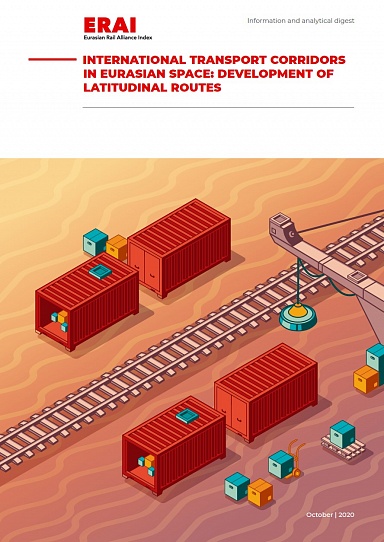International Transport Corridors (ITCs) have become a token of the modernity and a proverbial phrase among the theorists and practitioners in a range of fields, from logistics to political science. Although the concept of improving transport connectivity for solving economical and political problems is by no means a novelty, it was in 2010s that ITCs have become a focus of close attention of both academic community and decision makers.
In Eurasia, ITCs have come to play a major role. Because of the continentality, which is characteristic to many countries of the region, development of ITCs has become a central growth driver and a means to effectively integrate into the global economic relations and added value chains. An important impetus to the concept and practical application of ITCs in Eurasia was given by EAEU and China that in 2015 confirmed their intent to connect Eurasian Integration and Silk Road Economic Belt. That is why ITCs are becoming the flagship of improving connectivity of Eurasian space, hubs of economical growth and «assembly» of the space into a whole.
Railroads play a crucial role in the Eurasian ITCs. Because of the speed and reliability of deliveries it provides, railway transportation is starting to compete with shipment by sea (advantage of speed) and air (advantage of cost), with attracting cargo traffic to continental routes. This development is additionally stimulated by commitment to long-term development of ITCs on the part of the Eurasian states, and by business cooperation.
Despite the explosive growth of China — Europe — China transit shipments in the recent years, which was largely unexpected by experts, preserving this momentum will require certain steps. First, the stability of corridors and benefits obtainable by national economies depend on the extent of integration between ITCs and regional (national) transport logistic infrastructure. Second, the latitudinal (East-West) and meridional (North-South) corridors have to be complementary. Third, the increasing cargo traffic will escalate competition between different routes, primarily in the western and central segments of the East-West corridor.
Strategic conceptualization of transport logistics in the Eurasian space, together with tactical decisions aimed at reduction of institutional and transactional barriers and use of the potential of digital technologies, will facilitate further stable development of East-West freight traffic. In this regard, competition with alternative routes has to be taken into account, whereas the strategy should be built around the available advantages of the existing routes and the complementary nature of some of the alternative routes.
This study is the first part of the research of the Eurasian ITCs dedicated to East-West latitudinal routes and their competitive position.



